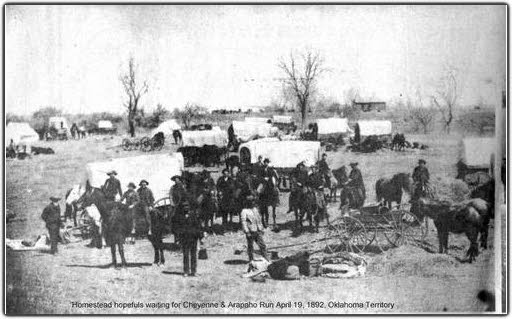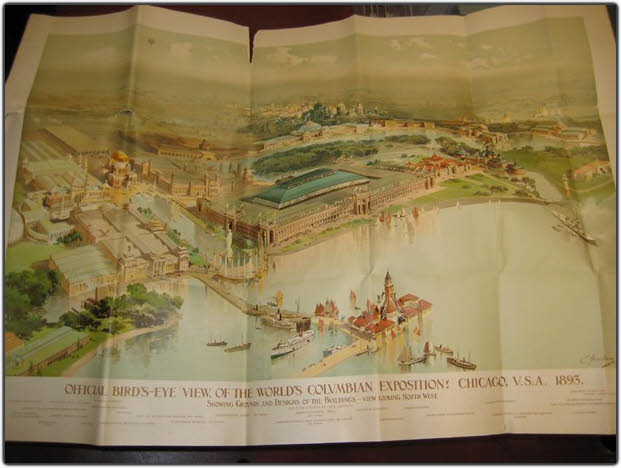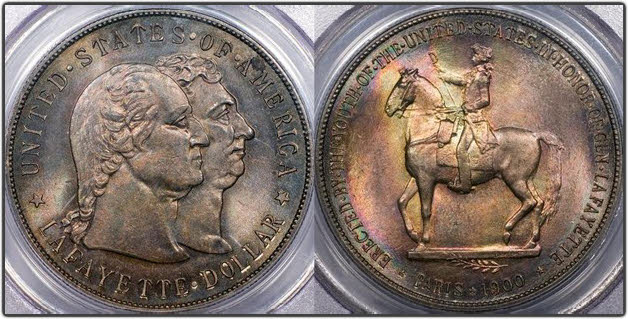Join in on the discussion of Classic Commemoratives
Introduction to U.S. Classic Commemorative Silver Coins
Written by: LeeG
All images in this lesson are of current events in 1892 when Classic Commemoratives were first proposed to the marketplace. Coins are an ideal way of expressing ideas or to mark historical events.
The United States Congress has been authorizing commemorative coins since the first commemorative half dollar was created in 1892 honoring the 400th anniversary of the discovery of the New World by Columbus.

Most commemorative coins are issued at a premium above their face value. The additional funds are used for particular projects or charitable organizations. The Columbian half dollars, for example, were sold at $1 each at the Columbian Exposition in 1893 and the 1936 Cincinnati Music Center commemorative half dollars; made in Philadelphia, Denver and San Francisco;are sold in sets at the price of $7.75.
 train](/images/article_images/US_Coins/EarlyCommemoratives/train.jpeg)
Though the half dollar has been the main vehicle for silver commemorative coins, there have been two quarters; one in 1893 featuring Queen Isabella made for the Board of Lady Managers for the Columbian Exposition and the Bicentennial quarter with the dual dates 1776-1976. There are also dollar commemoratives, the first being the Lafayette dollar of 1900 and the next issue made 83 years later commemorating the 1984 Olympics.
The number of commemorative issues peaked in the 1930's, and declined in the 1940's to only one design featuring Booker T. Washington, and one other in the 1950's featuring George Washington Carver. Recently, commemorative issues have become popular again and the United States Congress has authorized commemoratives almost every year since 1982.

Collectors love commemoratives and there's an active market for the all the issues including the modern ones. Putting sets together of the pre-1982 coins is a daunting challenge in that there are 144 pieces with 50 different designs in the classic silver commemorative series alone. If you have some commemorative silver half dollars, they may be worth from a few dollars to hundreds, even thousands of dollars, depending on the rarity and demand for that type.
A Brief Overview of Silver Commemoratives
The World’s Columbian Exposition, intended to be held in Chicago in 1892 to observe the 400th anniversary of Columbus’ landing in America, furnished the opportunity for the first United States commemorative coin, the 1892 Columbian half dollar. As it turned out, the Exposition was not completed in time, and the gates of the fair were not thrown open to the public until a year later in 1893. Additional Columbian half dollars with the 1893 date were produced. In the same year a small number of 1893 Isabella quarter dollars were issued at the Exposition, and were the first and only commemoratives of this denomination.

The next silver commemorative coin is the 1900-dated Lafayette silver dollar, all of which were struck in a single day on December 14, 1899, the 100th Anniversary of George Washington’s death. Conjoined portraits of Lafayette and Washington appear on the obverse of the coin. Next is the 1915-S half dollar issued for the Panama-Pacific International Exposition held in San Francisco in 1915, followed by the 1918 Illinois Centennial, 1920 Maine Centennial, and 1920 and 1921 Pilgrim Tercentenary half dollars.

Production of commemorative half dollars continued through 1954, with the year 1936 being particularly memorable with the issuance of a dozen new designs. At the time, commemoratives were a nationwide fad, prices jumped virtually overnight, and thousands of new buyers jumped on the bandwagon. Soon a peak was reached, followed by a market decline. However, commemoratives were here to stay, and from that time onward they have been a foundation stone in American numismatics.
![May 13, 1936 Dallas, South Dakota. Buried machinery in a barn lot during the Dust Bowl, an agricultural, ecological, and economic disaster in the Great Plains region of North America. [url]http://commons.wikimedia.org[/url] dust bowl](/images/article_images/US_Coins/EarlyCommemoratives/dust_bowl.jpeg)
Congressional criticism of commemorative half dollars resulted in the suspension of issues after 1954. It was not until 1982 that production was resumed, this time, with more equitable marketing and pricing programs, with distribution handled by the U.S. Mint. Earlier, many coins had been distributed by private commissions and individuals, not all of whom acted fairly.